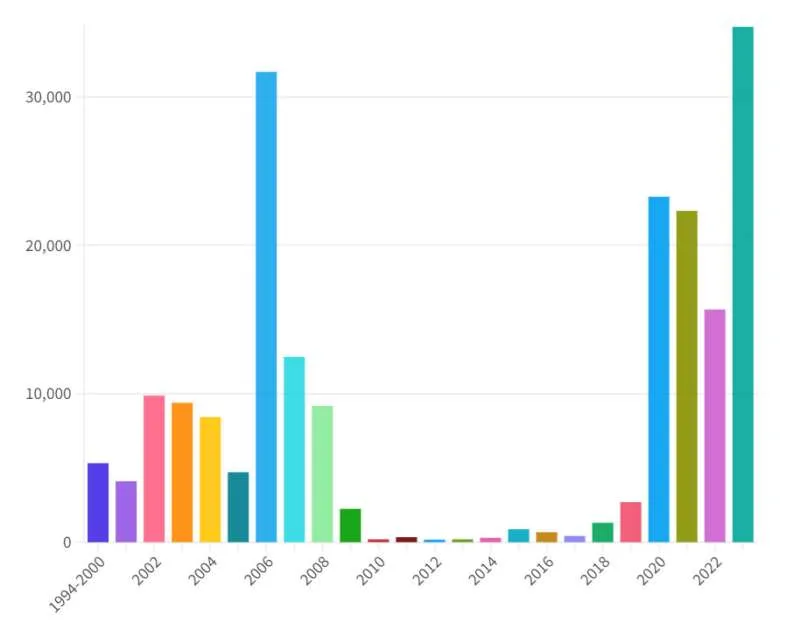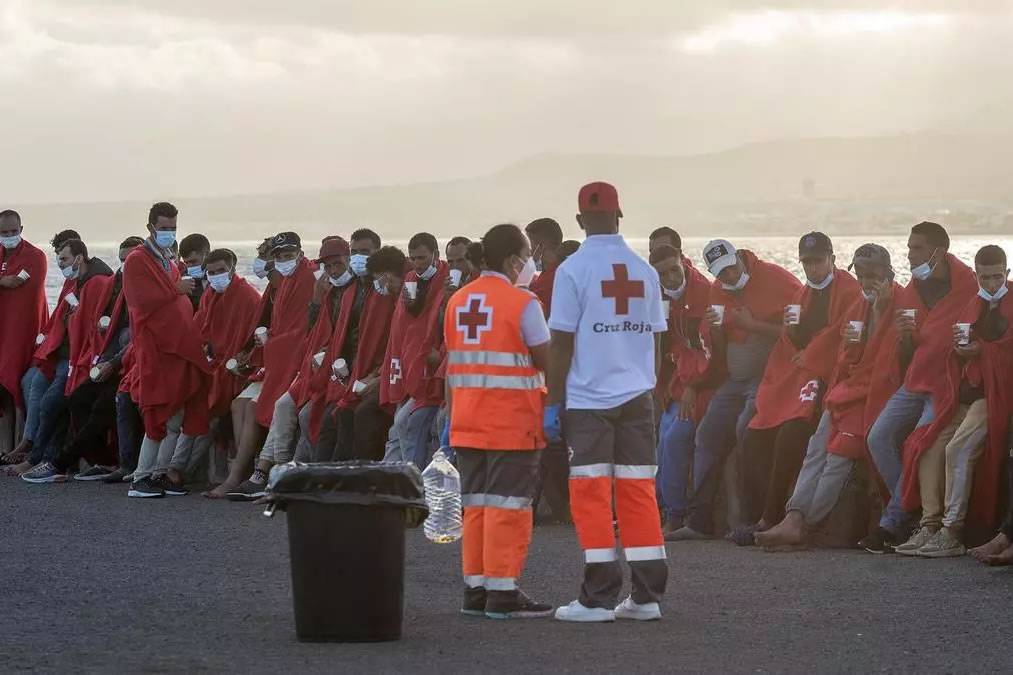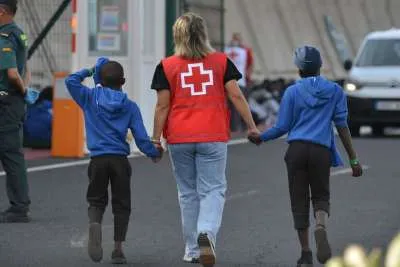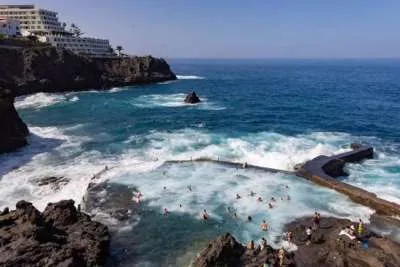Over 200,000 people have now reached the Canary Islands by boat since 1994
- 29-11-2023
- National
- Canarian Weekly
- Photo Credit: Cruz Roja
This past weekend the Canary Islands surpassed a total of 200,000 arrivals in boats from West Africa since its inception on August 28th, 1994, when two Sahrawi men landed on Fuerteventura in a small boat. As reported by Txema Santana, migration advisor to the previous Government of the Canary Islands, and confirmed by official figures from EFE, some 200,564 people have now survived the route and made it across dangerous waters to the archipelago.
This figure does not include the number of deaths or disappearances during the Atlantic crossing, estimated by the International Organization for Migration (IOM) at a minimum of 3,779. The IOM began documenting these incidents only nine years ago, in 2014.
The IOM consistently emphasizes that its data on deaths and disappearances represent only the tip of the iceberg, acknowledging that many "silent shipwrecks" occur, where a boat sinks with all occupants, leaving no one to testify to what happened or the number of victims.
Indeed, organisations closely monitoring the Canary Islands route, such as Caminando Fronteras, report much higher figures. For instance, they cite 1,784 deaths en route to the Canary Islands in 2022 alone.
According to annual counts published by the Ministry del Interior, by December 31st, 2022, a total of 165,852 people had arrived in the Canary Islands by boats, rubber dinghies, or makeshift rafts. Adding to this, 34,712 have survived the route in 2023 so far, setting a historical record for arrivals on the islands, surpassing the landmark cayuco crisis of 2006, which saw the arrival of 31,678 people.
While the numbers in the Canary Islands may seem modest compared to other migration routes, such as the Mediterranean, where 200,967 people have crossed to Europe this year, the Atlantic route is considered one of the deadliest globally. Not only does it expose those who venture across it to journeys of up to 1,500 kilometres in open ocean, but its historical death toll is one per every 20 survivors, more than double that of the Mediterranean (one per every 51).
Official arrival records also show that half of all human movement witnessed on the Canary Islands route since 1994 has occurred in the last four years, since its reactivation in 2020, with nearly 96,000 survivors in 2020, 2021, 2022, and 2023.

Graph showing number of arrivals year by year to the islands
The cayuco crisis of 2006 brought half as many people to the Atlantic, including that year and the following three, which still experienced a certain inertia of arrivals, totalling 55,583 and the lowest number was recorded in 2012 with only 173 people arriving in the Islands.
Taking into account the accumulated arrivals until yesterday (Tuesday), reaching 200,564, and considering the recent rescues of boats and dinghies, the historic barrier of 200,000 likely crossed once again in Fuerteventura, the island where it all began, with the 51 people rescued by the Salvamar Ízar on Saturday in a rubber boat south of Gran Tarajal.
Other articles that may interest you...
Trending
Most Read Articles

Featured Videos
A Vision of Elvis Tenerife Promo
- 10-05-2025
TEAs 2025 Highlights
- 17-11-2025

























































